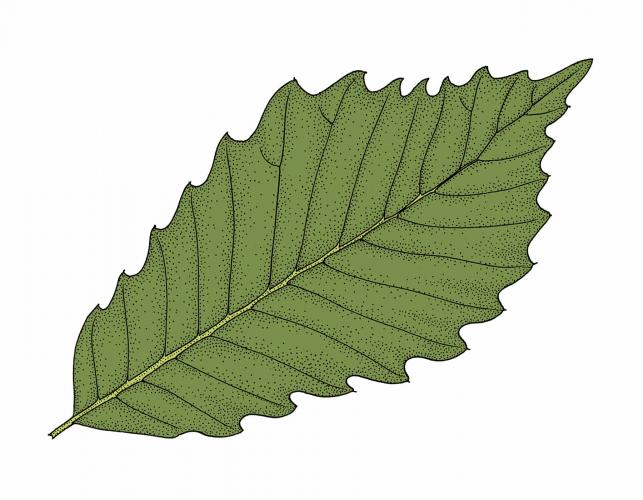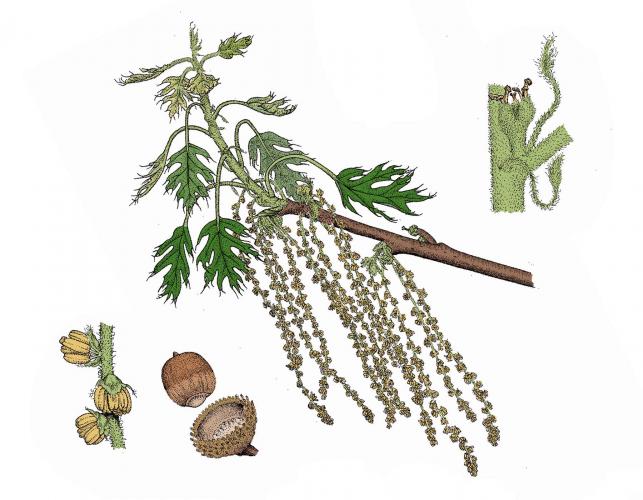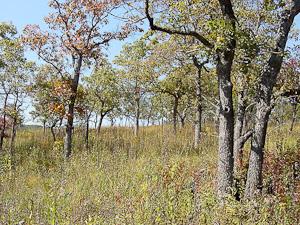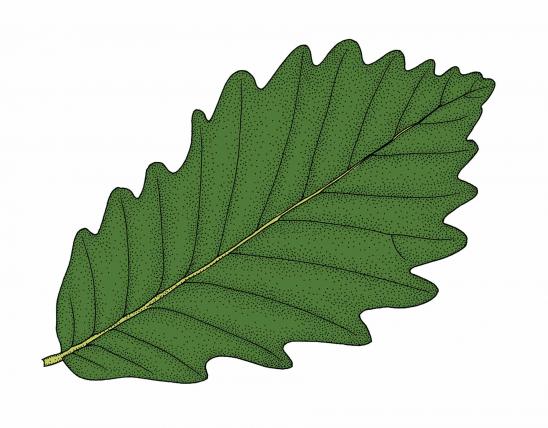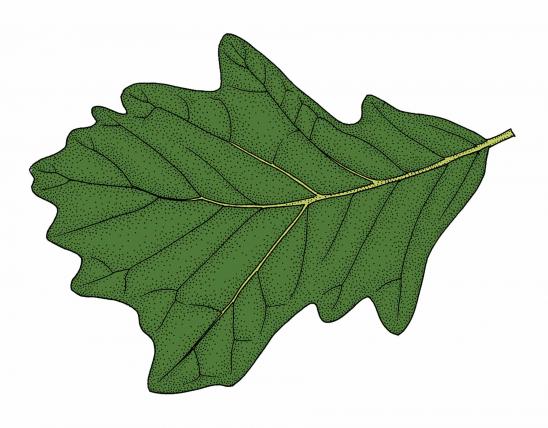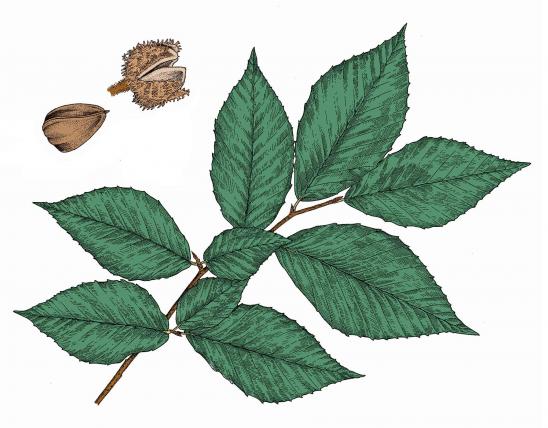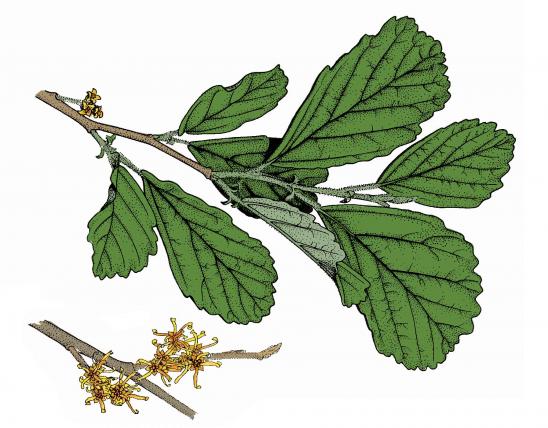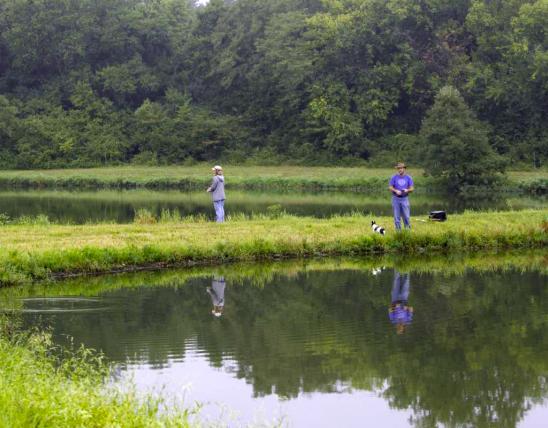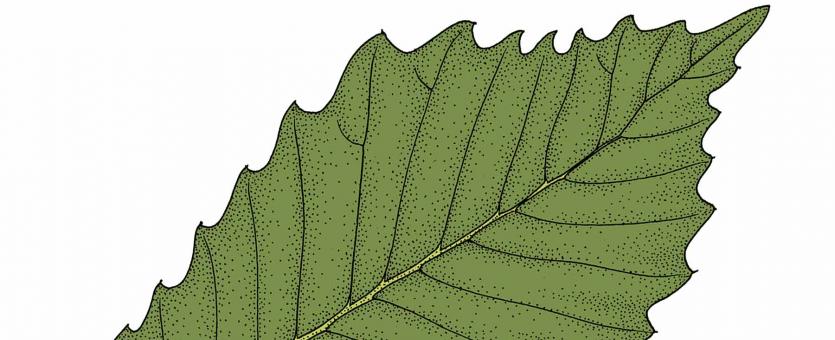
Chinkapin oak is a medium-sized, tall tree, often with large, low branches and a narrow, irregular crown.
Leaves are alternate, simple, 4–8 inches long, 1–3½ inches wide, broadest near the base or above the middle, ending in a pointed tooth (but no bristles or tiny spines on the edges); distinctively coarsely serrated or wavy (like sawteeth) along entire margin; 8–13 teeth per side. Underside paler than top, with gray hairs and conspicuous veins.
Bark is ashy gray, with shallow grooves and short, flaky ridges.
Twigs are slender, yellowish- to reddish-brown, initially hairy, becoming smooth with age.
Flowers April–May, in catkins.
Fruits September–October, acorns mostly solitary or in pairs, nut brown, shiny, broadest near the base and tapering slightly to the tip, ½–¾ inch long; cup covering about half the nut, bowl-shaped, thin, brown, hairy, the scales small, flattened; the seed sweet, edible, ripening in autumn of the first year.
Height: 60 to 100 feet.
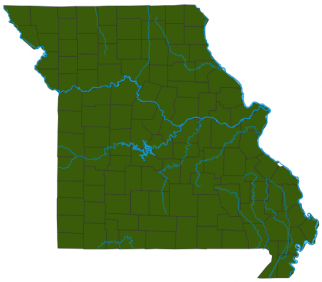
Statewide.
Habitat and Conservation
Most common in dry, rocky upland woods, on bluffs, and in borders of glades, on soils derived from limestone or dolomite. Also found in moist bottomlands, floodplain forests, and lower slopes along streams.
Status
Common. This species is also called chestnut oak and yellow chestnut oak, since the leaves are similar to those of chestnuts. The name (also spelled "chinquapin") is derived from the Algonquian word "chinkomen," which itself translates to "chestnut." Algonquians of many tribes lived throughout eastern North America when Europeans arrived. Many English words for American plants, animals, and places (like hickory, woodchuck, and Massachusetts) are essentially Algonquian words.
Human Connections
Most oaks were used medicinally by Native Americans because of the astringent properties of the bark. Chinkapin today is planted as a shade tree and is valuable for its lumber, which has many uses, ranging from fuel to fence posts to cabinetry and furniture.
Ecosystem Connections
This tree, like many other oaks in the "white oak group" (oaks that lack bristle-tips, or tiny spines, on the leaf margins), produces sweet acorns that are relished by many kinds of wildlife. These and other nuts, called "hard mast," are crucial winter foods for deer, turkey, grouse, and many more.
